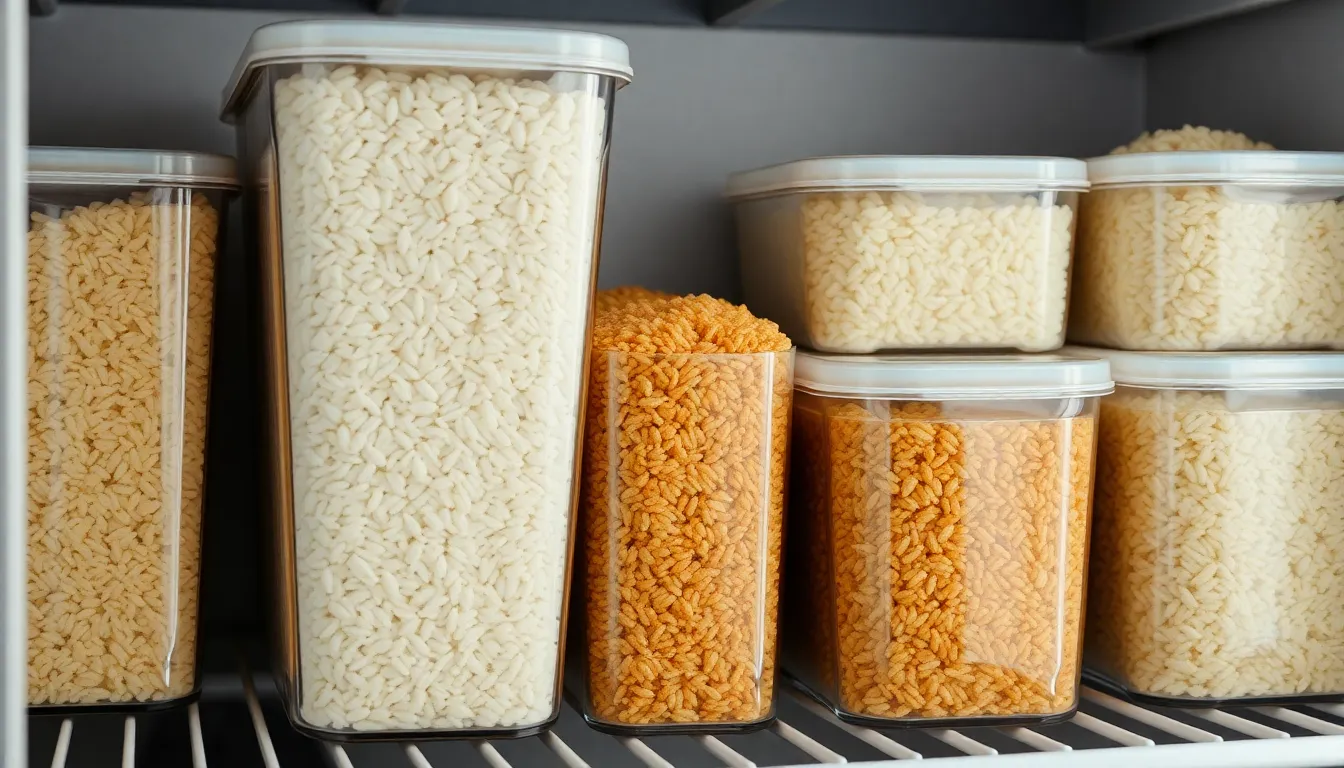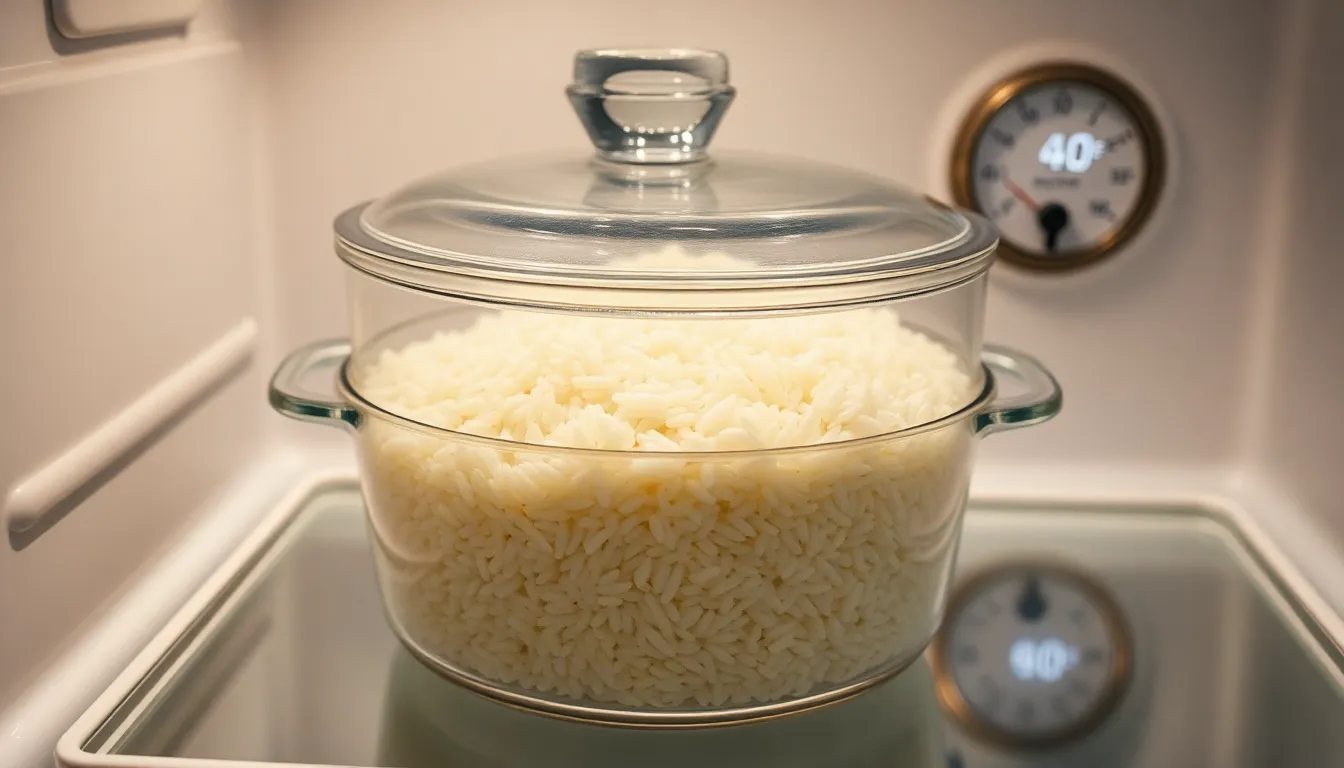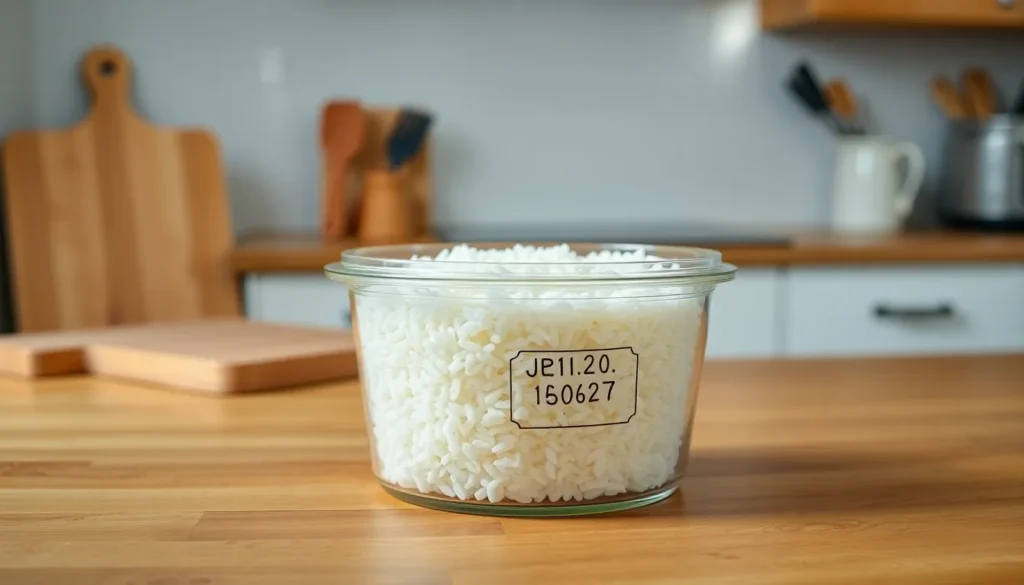Leftover rice in the fridge might seem harmless, but how long can it really hang out before it turns into a science experiment? It’s a question that haunts many home cooks and takeout enthusiasts alike. Picture this: you’ve got a delicious bowl of fried rice waiting for you, but is it still safe to eat, or are you flirting with disaster?
Table of Contents
ToggleUnderstanding Refrigerated Rice
Refrigerated rice remains safe to eat for about 4 to 6 days. Storage duration depends on various factors, including initial cooking conditions and storage methods. Within this timeframe, rice maintains its texture and flavor, while also minimizing the risk of foodborne illness.
Fried rice or similar dishes require extra attention due to added ingredients. Ingredients like vegetables, meats, or sauces can affect the rice’s lifespan. Careful monitoring of the storage temperature is essential. A consistent refrigerator temperature of 40°F or below effectively slows bacterial growth.
Freezing is an option for longer preservation. Rice stored in airtight containers or freezer bags can last for about 1 to 2 months in the freezer. Proper reheating is crucial after thawing; heating rice to 165°F kills harmful bacteria that may develop during storage.
Signs of spoilage indicate when rice is no longer suitable for consumption. Changes in color, texture, or an off smell suggest it’s best to discard the rice. Observing these indicators can prevent food waste and ensure safety.
Portions can also play a role in storage. Smaller portions promote quicker cooling and reduce the risk of bacteria accumulation. It’s advisable to cool rice within two hours after cooking to minimize health risks.
Ultimately, understanding how long refrigerated rice is good for enhances food safety. This knowledge helps home cooks and takeout lovers make informed decisions about storing and consuming leftover rice.
Factors Affecting Rice Shelf Life


Several factors influence how long refrigerated rice remains safe to consume. Understanding these elements helps ensure food safety and minimizes waste.
Type of Rice
Different types of rice impact shelf life. White rice generally lasts longer than brown rice due to its lower oil content. Jasmine and Basmati rice also tend to stay edible for about 4 to 6 days when refrigerated. Fried rice, which includes additional ingredients, often has a shorter lifespan and can spoil faster. Therefore, staying aware of the rice variety can help in determining freshness.
Storage Conditions
Storage conditions play a significant role in rice longevity. Maintaining a refrigerator temperature of 40°F or below slows bacterial growth, enhancing safety. Additionally, storing rice in airtight containers prevents moisture infiltration. Cooling rice quickly after cooking also minimizes bacteria accumulation. When stored properly, refrigerated rice can remain good for up to 6 days, but inadequate conditions can lead to spoilage even sooner.
Signs of Spoiled Refrigerated Rice
Identifying signs of spoiled refrigerated rice ensures safety and quality. Consumers should be aware of specific indicators that signal it’s time for disposal.
Off Smell
An off smell serves as a primary indicator of spoiled rice. Fresh rice has a neutral, pleasant aroma. When the smell changes to sour, rancid, or musty, it signals spoilage. Bacteria growth often leads to these undesirable odors. Any noticeable off smell should prompt immediate disposal of the rice. Trusting one’s nose can prevent foodborne illnesses caused by consuming spoiled products. Always prioritize freshness as a guiding factor when evaluating leftover rice.
Texture Changes
Texture changes provide clear signs of spoilage in refrigerated rice. Freshly cooked rice remains firm and fluffy. However, if rice becomes excessively sticky or mushy, it indicates potential spoilage. Gritty or dry textures can emerge due to harmful bacteria. These discrepancies in texture can compromise the overall eating experience. When rice shows significant texture alteration, it’s best to discard it rather than risk consuming spoiled food. Observing these changes helps maintain safe dining conditions.
Safe Storage Practices
Storing rice safely plays a vital role in extending its shelf life. Refrigerate cooked rice within two hours of preparation to minimize bacterial growth. Keeping the refrigerator temperature at or below 40°F significantly slows down bacterial replication. Using airtight containers protects rice from moisture and helps maintain its quality.
Freezing rice is an excellent option for longer storage. When placed in airtight containers, it can last for 1 to 2 months and retains flavor and texture. Reheating rice properly is essential. Bringing it to an internal temperature of 165°F ensures harmful bacteria are eliminated, making it safe for consumption.
Portioning rice into smaller servings helps cool it more quickly, reducing the time spent in the temperature danger zone. Fresh rice should possess a neutral aroma, while rice that develops a sour or rancid smell indicates spoilage. Changes in texture also signal that rice may no longer be safe to eat. Fresh rice appears fluffy and firm; however, rice that becomes sticky, mushy, gritty, or overly dry has likely gone bad.
Obvious signs of spoilage include discoloration or an unusual odor. When any of these indicators arise, disposal becomes necessary to ensure food safety. Brown rice, due to its higher oil content, often spoils faster than white rice. Understanding these safe storage practices and spoilage indicators allows home cooks and takeaway lovers to enjoy their meals with peace of mind, reducing waste and promoting food safety.
Knowing how long refrigerated rice remains safe to eat is vital for both home cooks and takeaway enthusiasts. By following proper storage practices and being aware of spoilage signs, individuals can enjoy their meals without risking foodborne illness. Keeping rice in airtight containers and ensuring the refrigerator stays at the right temperature are key steps in prolonging its freshness. When in doubt about the rice’s condition, it’s always better to err on the side of caution. With these guidelines in mind, enjoying leftover rice can be both safe and satisfying.








